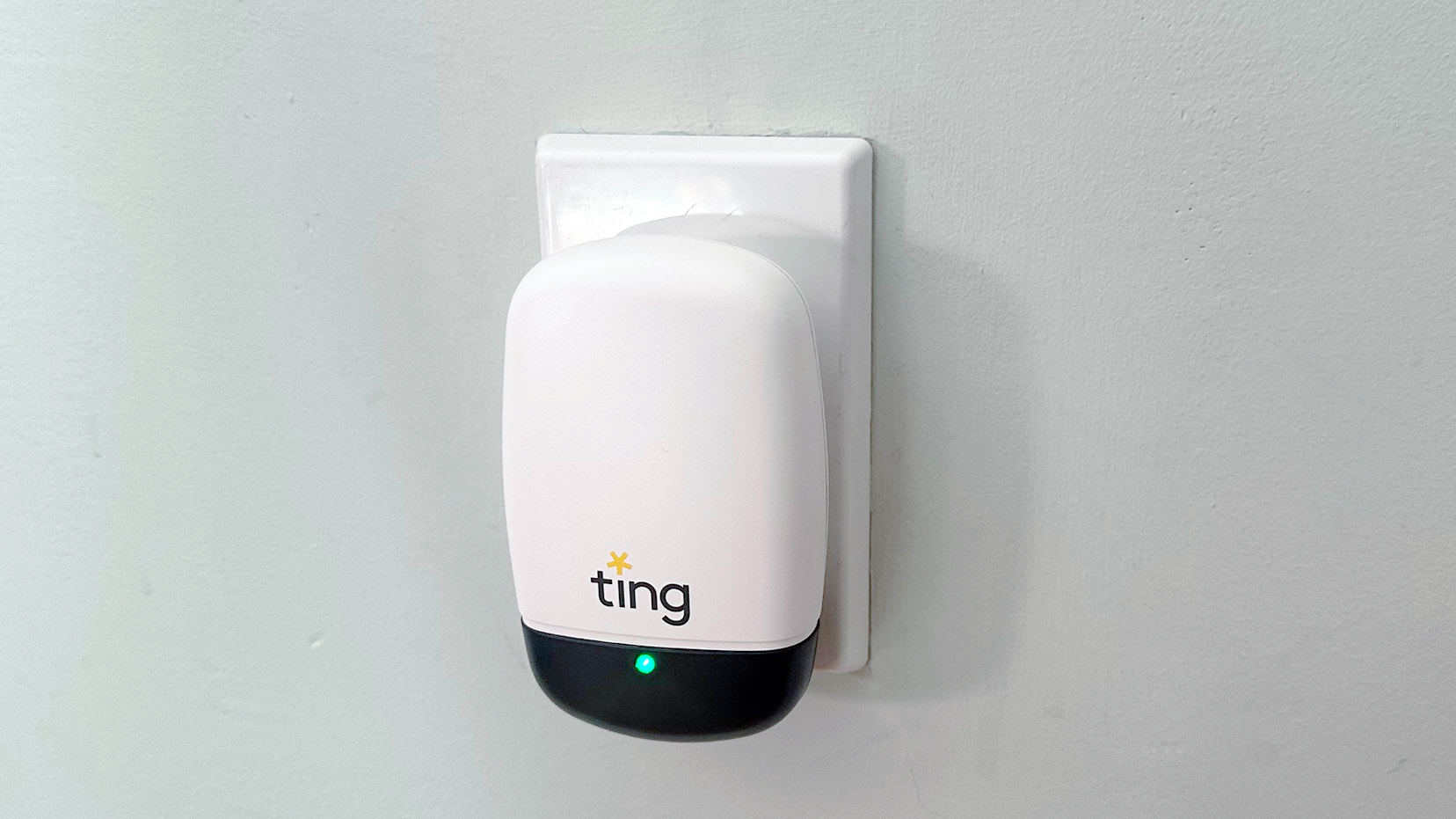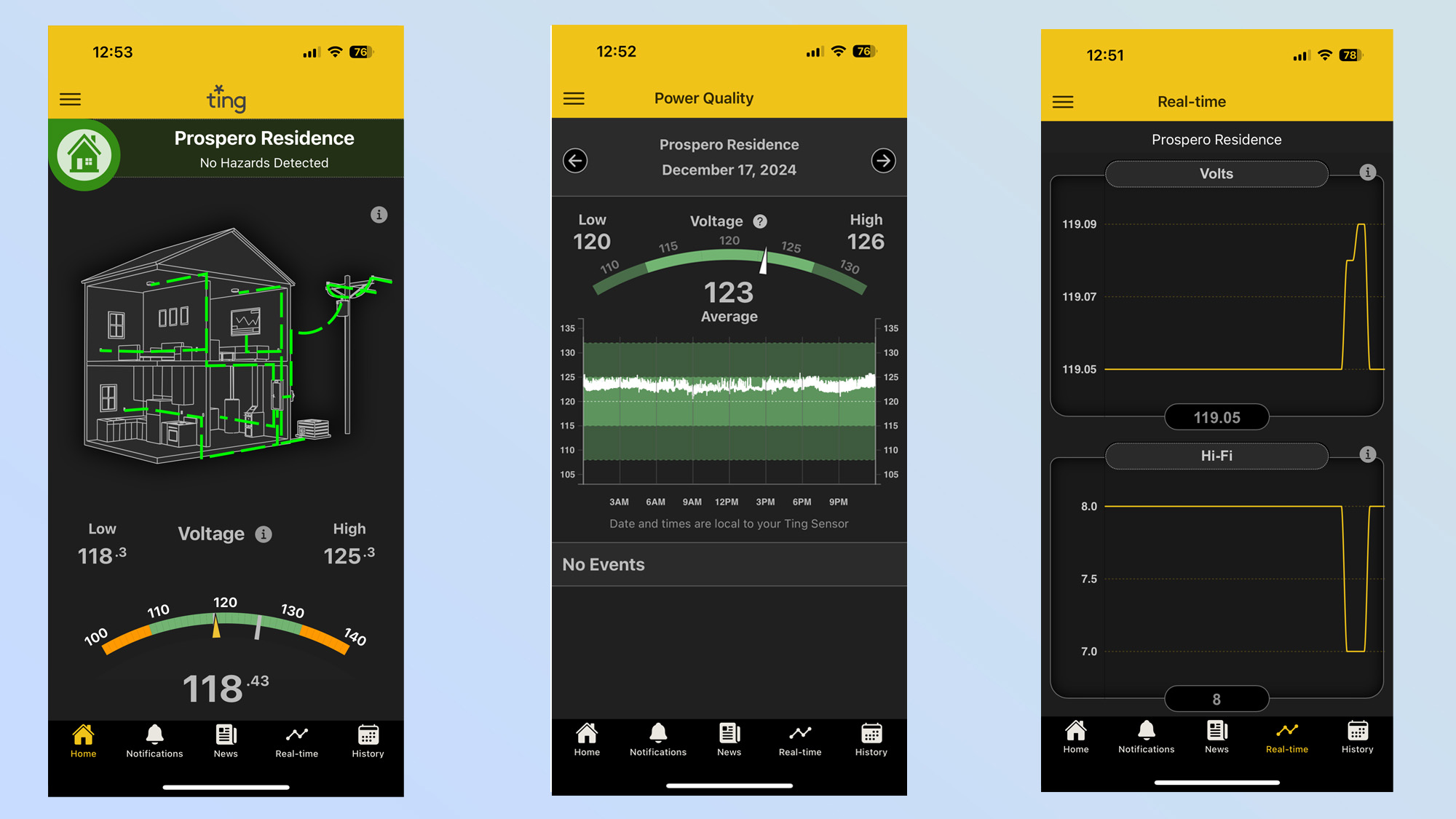This tiny device can help prevent electrical fires in your home — and you might be able to get one for free
Whisker Labs' Ting can detect potential problems with the wiring in your home.

Every winter, millions of people will haul out dusty strings of Christmas lights from their basement or attic to hang on their trees in their homes. But with that holiday cheer comes the potential of disaster from old, fraying wires.
After water damage, electrical fires are the biggest issue confronting homeowners, but knowing what's going on inside your walls or with your appliances isn't the easiest.
Whisker Labs' Ting sensor is designed to identify these potential issues and alert you to any problems before they become much more severe. I installed the Ting sensor in my home to see if it could detect anything wrong with the wiring in my 90-year-old home. Here's what I found out.
Ting cost and subscription fees
Ting, which has been around for a few years, costs $99 through Ting.com, for the device itself plus one year of service; after that, it's $49 per year. In the event of an emergency — if the Ting sensor notices an issue with your home — the company will contact you via phone, text, or email, and will coordinate a visit from an electrician to remedy the issue. Ting will cover any expenses up to $1,000.
You can get Ting and the service for free if you have home insurance through Nationwide, State Farm, Pure, Westfield, Ohio Mutual, The Philadelphia Contributionship, or Farm Bureau Insurance. (Here's a link to sign up through those insurance providers).
Ting setup and how it works
The Ting sensor, which is about the size of a smart plug, is simple to use: Just plug it into any three-prong outlet in your home, and then connect it to your Wi-Fi through the Ting app. After about a week, the sensor will have accumulated enough data about your home's circuitry to determine what should — and shouldn't be happening.
The Ting app measures two things: the voltage coming into your home from your electric utility, and high-frequency electrical noise, the latter of which is typically caused by electrical arcing — electricity jumping from one wire to another. It occurs most often when you have a frayed or damaged wire. The company says that
Get instant access to breaking news, the hottest reviews, great deals and helpful tips.
Typically, the voltage coming into your home will be around 120 volts, give or take. However, in the summer months, when there's a huge demand on the electrical grid, the voltage may drop as your utility struggles to keep up with demand. Or, there might be a surge of voltage if, say, there's a lightning strike. If the voltage coming into your home is too high or too low for an extended period of time, it could cause damage to your appliances, and lead to potential fire hazards.
Bob Marshall, the CEO of Whisker Labs (the company that makes Ting), told me that roughly 60% of the hazards Ting has detected are a result of faulty wiring, while another 40% come from things that are plugged in to an outlet. Around the holidays, they find a surge in issues from things like Christmas lights, or too many strands plugged into a power strip. This year, he said, they found a new problem: electric rotating Christmas trees.
Ting performance and limitations

I've been testing the Ting sensor for the past few weeks, and fortunately, haven't found any issues in my home. As Marshall told me, no news is good news — though he did caution that Ting won't detect every type of electrical issue in your home (this FAQ details what it can and can't prevent). Hopefully, you'll plug this thing in and never hear from it again. The only alert I ever received is when I pulled the plug from the wall.
The app gives you real-time data on both the voltage and high-frequency noise — you can see the latter spike if you turn on a hair dryer or blender — as well as historical data.
However, that's pretty much all Ting does. If you want insights into how much energy particular appliances are using, you'll need to install something like Sense, which costs $299 plus installation. And, it won't alert you to an actual fire — you'll need one of the best smart smoke detectors for that.
You should also know that there are things you should never plug into an extension cord or power strip, such as space heaters, which can go a long way towards preventing many issues.
If you can get Ting through your insurance provider, it's a free and easy way to add a bit more protection to your home.
More from Tom's Guide

Michael A. Prospero is the U.S. Editor-in-Chief for Tom’s Guide. He oversees all evergreen content and oversees the Homes, Smart Home, and Fitness/Wearables categories for the site. In his spare time, he also tests out the latest drones, electric scooters, and smart home gadgets, such as video doorbells. Before his tenure at Tom's Guide, he was the Reviews Editor for Laptop Magazine, a reporter at Fast Company, the Times of Trenton, and, many eons back, an intern at George magazine. He received his undergraduate degree from Boston College, where he worked on the campus newspaper The Heights, and then attended the Columbia University school of Journalism. When he’s not testing out the latest running watch, electric scooter, or skiing or training for a marathon, he’s probably using the latest sous vide machine, smoker, or pizza oven, to the delight — or chagrin — of his family.
